10 Revolutionary Futuristic Cars That Will Blow Your Mind
- BusNewsNetwork
- Jul 17, 2023
- 18 min read
Updated: Feb 3
1. Introduction to the world of futuristic cars
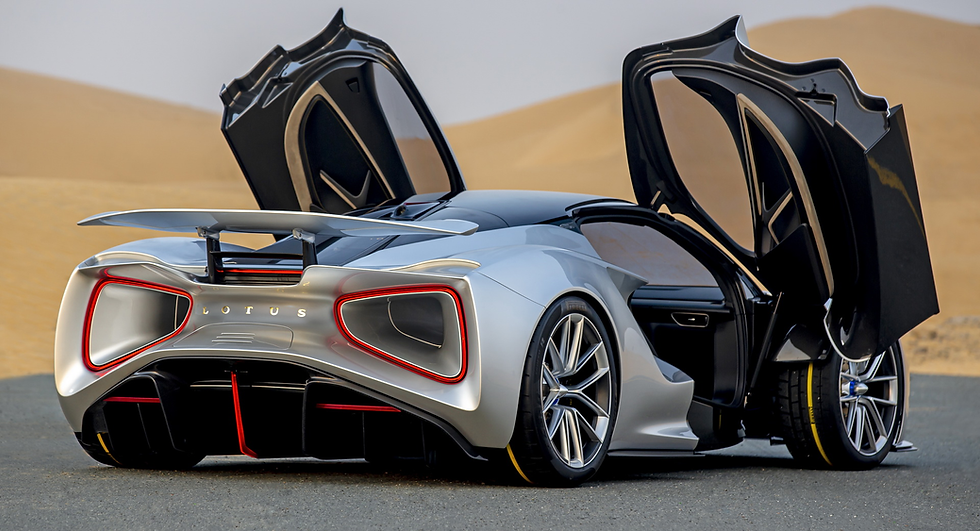
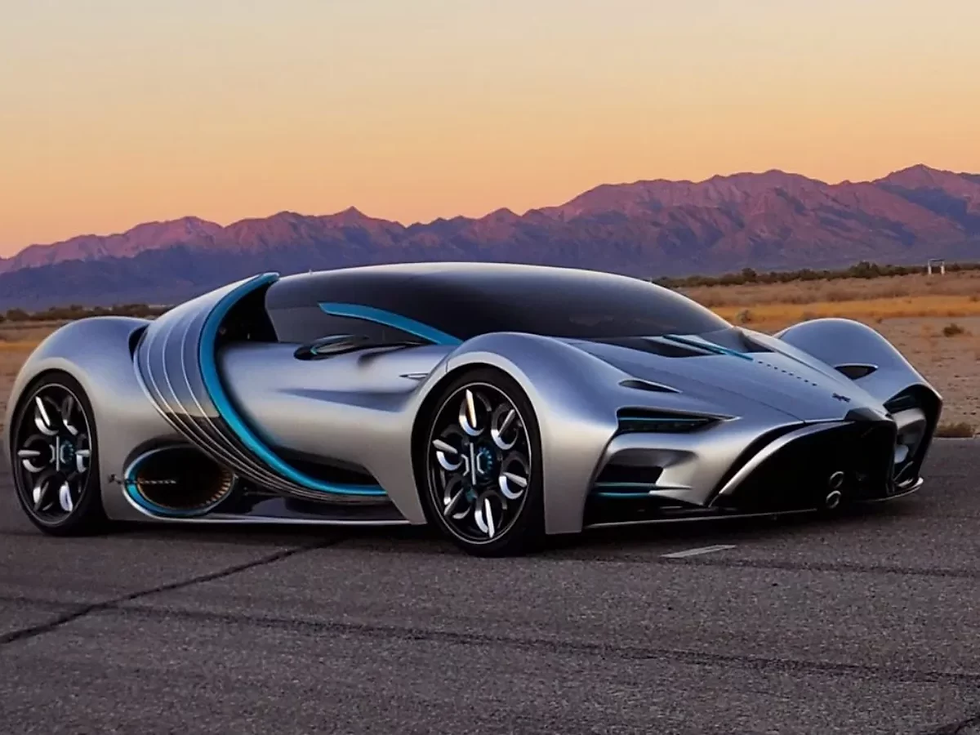
As technology continues to advance at an unprecedented rate, the automotive industry is undergoing a major transformation. Gone are the days of traditional gasoline-powered vehicles. In their place, A new generation of revolutionary futuristic cars is emerging, powered by electric and hybrid engines, equipped with cutting-edge safety features, and capable of autonomous driving. These cars are not just a vision of the future, but a reality that is rapidly shaping the automotive landscape. In this blog, we will explore 10 of the most mind-blowing futuristic cars that are set to revolutionize the way we think about transportation. Get ready to be amazed!
2. The impact of revolutionary cars on society
Revolutionary futuristic cars are not only changing the automotive industry, but they are also having a significant impact on society as a whole. These cars are not just transportation vehicles; they are shaping the way people live, work, and interact with their environment. Here are some of the key impacts these cars are having on society:
1. Environmental Sustainability: One of the major benefits of futuristic cars is their focus on environmental sustainability. With their electric and hybrid engines, These cars produce zero or significantly reduced emissions, helping to reduce air pollution and combat climate change. This shift towards cleaner transportation is crucial in creating a more sustainable future for the planet.
2. Improved Safety: Futuristic cars are equipped with advanced safety features that significantly reduce the risk of accidents. The integration of autonomous driving technology, sensors, and artificial intelligence allows these cars to detect and respond to potential hazards more effectively than traditional vehicles. This has the potential to save countless lives and make roads safer for everyone.
3. Enhanced Mobility: Revolutionary cars are also improving mobility for individuals with physical disabilities or limited access to transportation. Features like autonomous driving and assistive technologies enable people with disabilities to gain independence and access to various locations without relying on others. This promotes inclusivity and equal opportunities for all members of society.
4. Economic Transformation: The emergence of futuristic cars is driving a significant economic transformation. The shift towards electric vehicles has led to new job opportunities in manufacturing, research and development, and infrastructure development. Additionally, the rise of autonomous driving technology has the potential to disrupt various industries, such as transportation, logistics, and delivery services.
5. Urban Planning and Infrastructure: The integration of futuristic cars into cities requires careful urban planning and infrastructure development. As autonomous vehicles become more prevalent, cities will need to adapt their infrastructure to support these vehicles, including dedicated charging stations, smart traffic management systems, and communication networks. This shift in urban planning has the potential to improve traffic flow, reduce congestion, and create more sustainable and livable cities.
6. Changing Lifestyles: Revolutionary cars are not just changing transportation; they are also changing the way people live and experience their daily lives. With autonomous driving technology, individuals will have more time and freedom while commuting. This could lead to new opportunities for work, relaxation, or entertainment during travel time. Additionally, the integration of smart technology in cars allows for connectivity, entertainment, and personalized experiences on the go.
In conclusion, the impact of revolutionary futuristic cars goes beyond transportation. These cars are shaping a more sustainable, safer, and connected society. With their environmental benefits, improved safety features, enhanced mobility, economic transformation, urban planning changes, and changing lifestyles, these cars are set to revolutionize the way we live and interact with our environment. The future of transportation is indeed exciting and full of possibilities.
3. Cutting-edge technologies that redefine the automotive industry
Cutting-edge technologies are revolutionizing the automotive industry, redefining the way we think about transportation and shaping the future of mobility. These technologies are pushing the boundaries of innovation and transforming the way cars are designed, built, and operated. Here are three cutting-edge technologies that are redefining the automotive industry:
1. Electric Vehicles (EVs): Electric vehicles have gained significant traction in recent years and are poised to become the future of transportation. With advancements in battery technology and infrastructure, EVs offer a clean and sustainable alternative to traditional combustion engine vehicles. The transition to electric vehicles not only reduces greenhouse gas emissions and air pollution but also eliminates our dependence on fossil fuels. As technology continues to improve, we can expect to see longer driving ranges, faster charging times, and increased affordability, making electric vehicles more accessible to the masses.
2. Autonomous Driving: Autonomous driving technology is another groundbreaking innovation that is reshaping the automotive industry. With the advancements in artificial intelligence, sensors, and computing power, self-driving cars are becoming a reality. Autonomous vehicles have the potential to improve road safety, reduce congestion, and enhance the overall efficiency of transportation systems. These vehicles use a combination of sensors and cameras to detect and navigate through their surroundings, making real-time decisions to ensure a safe and seamless driving experience. While fully autonomous cars are still in the testing phase, the automotive industry is making significant strides towards self-driving technology, bringing us closer to a world where cars can navigate without human intervention.
3. Connectivity and Smart Features: The integration of connectivity and smart features in cars is transforming the driving experience. From advanced infotainment systems to connected vehicles, cars are becoming more than just a mode of transportation. With features like wireless connectivity, voice-activated controls, and advanced navigation systems, cars are becoming an extension of our digital lives. Connectivity also enables vehicle-to-vehicle and vehicle-to-infrastructure communication, laying the groundwork for the development of smart transportation systems. These systems can improve traffic flow, reduce accidents, and enhance overall efficiency on the roads. Additionally, the rise of connected cars opens up opportunities for over-the-air updates, enabling manufacturers to enhance and optimize vehicle performance and safety features remotely.
In conclusion, the automotive industry is witnessing a technological revolution, with cutting-edge technologies redefining the way we think about transportation. Electric vehicles, autonomous driving, and connectivity are just a glimpse of the innovations that are shaping the future of the automotive industry. As these technologies continue to evolve, we can expect to see a more sustainable, efficient, and connected transportation system that will transform the way we move and interact with our vehicles. The automotive industry is embracing these technologies, and the future of transportation looks incredibly promising.
4. The rise of electric and autonomous vehicles
The future of transportation is being shaped by the rise of electric and autonomous vehicles. These cutting-edge technologies are revolutionizing the automotive industry and transforming the way we think about transportation. Let's take a closer look at the rise of electric and autonomous vehicles and their impact on the future of transportation.
1. Electric Vehicles (EVs): Electric vehicles have gained significant traction in recent years and are poised to become the future of transportation. With advancements in battery technology and infrastructure, EVs offer a clean and sustainable alternative to traditional combustion engine vehicles. The transition to electric vehicles not only reduces greenhouse gas emissions and air pollution but also eliminates our dependence on fossil fuels.
As technology continues to improve, we can expect to see longer driving ranges, faster charging times, and increased affordability, making electric vehicles more accessible to the masses. The growing availability of charging stations and the development of fast-charging technology are further driving the adoption of electric vehicles.
2. Autonomous Driving: Autonomous driving technology is another groundbreaking innovation that is reshaping the automotive industry. With advancements in artificial intelligence, sensors, and computing power, self-driving cars are becoming a reality. Autonomous vehicles have the potential to improve road safety, reduce congestion, and enhance the overall efficiency of transportation systems.
These vehicles use a combination of sensors and cameras to detect and navigate through their surroundings, making real-time decisions to ensure a safe and seamless driving experience. While fully autonomous cars are still in the testing phase, the automotive industry is making significant strides towards self-driving technology, bringing us closer to a world where cars can navigate without human intervention.
3. Benefits of Electric and Autonomous Vehicles: The rise of electric and autonomous vehicles brings numerous benefits to the future of transportation. Electric vehicles eliminate the emissions associated with traditional combustion engines, reducing air pollution and improving air quality. They also contribute to a more sustainable and environmentally friendly transportation system.
Autonomous vehicles have the potential to reduce accidents caused by human error, making roads safer for everyone. They can also enhance the overall efficiency of transportation systems by optimizing traffic flow and reducing congestion. Additionally, autonomous vehicles can provide mobility solutions for individuals who are unable to drive, such as the elderly or disabled.
4. Challenges and Future Outlook: While the rise of electric and autonomous vehicles presents exciting opportunities, there are also challenges that need to be addressed. Developing the necessary infrastructure, including charging stations for electric vehicles and a robust communication network for autonomous vehicles, will be critical for widespread adoption.
Furthermore, ensuring the safety and reliability of autonomous vehicles is paramount. Regulatory frameworks and standards will need to be established to govern the deployment and operation of autonomous vehicles on public roads. Cybersecurity also becomes a crucial aspect, as autonomous vehicles rely on interconnected systems that need to be protected from potential cyber threats.
In conclusion, the rise of electric and autonomous vehicles is transforming the future of transportation. These cutting-edge technologies offer cleaner, safer, and more efficient mobility solutions. As technology continues to advance and infrastructure improves, we can expect to see a transportation system that is increasingly reliant on electric and autonomous vehicles. The future of transportation looks incredibly promising, and these technologies will play a significant role in shaping it.
5. Unveiling 10 mind-blowing futuristic cars
5. Unveiling 9 Mind-Blowing Futuristic Cars
In this section, we will explore 9 most revolutionary cars that are set to redefine the future of transportation. These futuristic vehicles showcase cutting-edge technology and innovative design, offering a glimpse into what the automotive industry has in store for us.
1. Audi AI: Trail Quattro: The Audi AI:Trail Quattro is an electric off-road concept vehicle that reimagines the future of adventure travel. With its futuristic design and all-terrain capabilities, this SUV offers a comfortable and sustainable off-road experience. The AI:Trail Quattro features a fully-electric drivetrain, advanced autonomous capabilities, and a spacious interior that connects occupants with nature.

2.Mercedes-Benz Vision AVTR: Inspired by the movie "Avatar," the Mercedes-Benz Vision AVTR is a groundbreaking concept car that pushes the boundaries of innovation. This futuristic vehicle features a sustainable electric powertrain and incorporates biometric technology to enhance the driver's connection with the car. The Vision AVTR also has seamless integration with the surrounding environment, reflecting its commitment to sustainability and connectivity
vMercedes-Benz Vision AVTR: Inspired by the movie "Avatar," the Mercedes-Benz ision AVTR is a groundbreaking concept car that pushes the boundaries of innovation. This futuristic vehicle features a sustainable electric powertrain and incorporates biometric technology to enhance the driver's connection with the car. The Vision AVTR also has seamless integration with the surrounding environment, reflecting its commitment to sustainability and connectivity. ercedes-Benz Vision AVTR: Inspired by the movie "Avatar," the Mercedes-Benz vision AVTR is a groundbreaking concept car that pushes the boundaries of innovation. This futuristic vehicle features a sustainable electric powertrain and incorporates biometric technology to enhance the driver's connection with the car. The Vision AVTR also has seamless integration with the surrounding environment, reflecting its commitment to sustainability and connectivity.
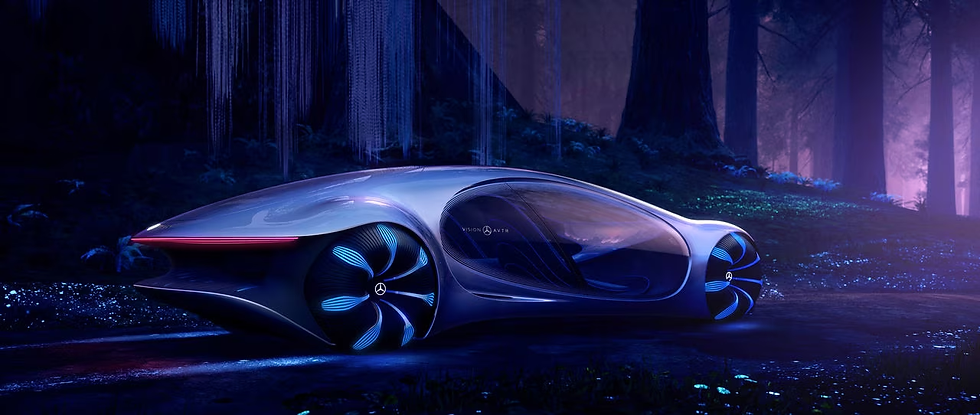
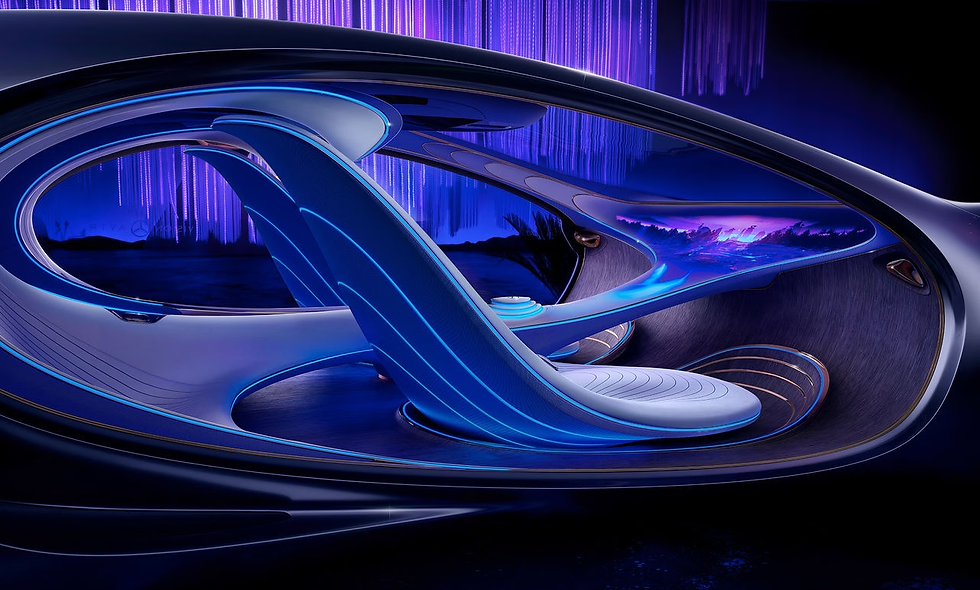
4. BMW Vision iNext: The BMW Vision iNext is an electric crossover concept that showcases the brand's vision for the future of mobility. With its clean and minimalist design, the iNext offers a spacious and comfortable interior equipped with state-of-the-art technology. This autonomous vehicle is designed to provide a luxurious and sustainable driving experience.

5. Lexus LF-30 Electrified: The Lexus LF-30 Electrified is a futuristic concept car that embodies the brand's vision for sustainable mobility. This all-electric luxury vehicle features a striking design and advanced electrification technology. The LF-30 Electrified also showcases innovative features such as autonomous driving capabilities and advanced gesture control.

5. Porsche Taycan: The Porsche Taycan is an all-electric sports car that combines performance and sustainability. With its sleek and sporty design, the Taycan offers exhilarating acceleration and precise handling. Equipped with a high-performance electric drivetrain, the Taycan delivers impressive range and fast-charging capabilities.

6. Rivian R1T: The Rivian R1T is an all-electric pickup truck that combines rugged capability with sustainable mobility. This off-road adventure vehicle offers impressive off-road performance and a range of up to 400 miles on a single charge. The R1T also features a unique storage solution known as the "Gear Tunnel," providing ample cargo space for all your outdoor gear.

7. Lucid Air: The Lucid Air is a luxury all-electric sedan that combines elegance and performance. With its aerodynamic design and advanced electric drivetrain, the Air offers a smooth and quiet ride. Equipped with advanced autonomous driving capabilities and innovative features such as a spacious interior and state-of-the-art infotainment system, the Lucid Air redefines the luxury sedan experience.
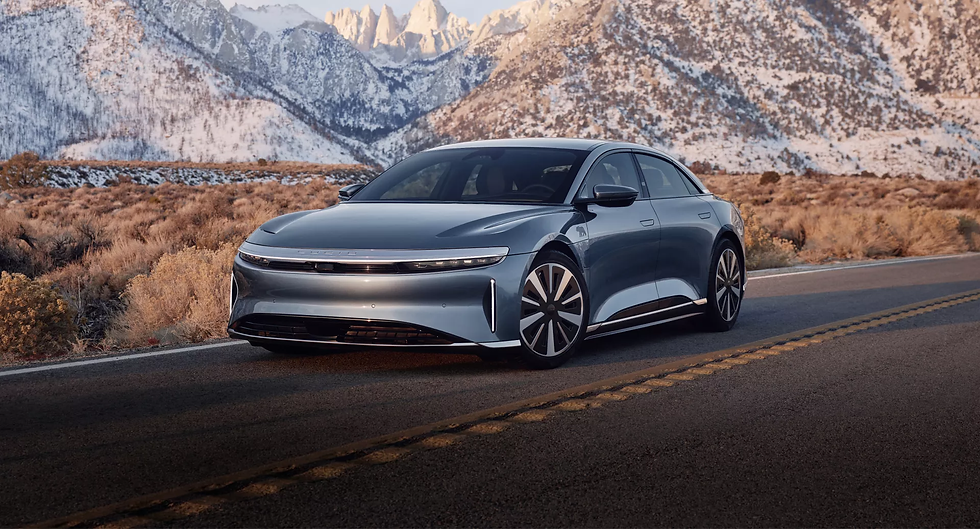
8. NIO EP9: The NIO EP9 is an all-electric hypercar that pushes the boundaries of performance. With its groundbreaking design and powerful electric drivetrain, the EP9 holds multiple world records for electric vehicles. This high-performance car showcases the potential of electric power and sets a new benchmark for speed.
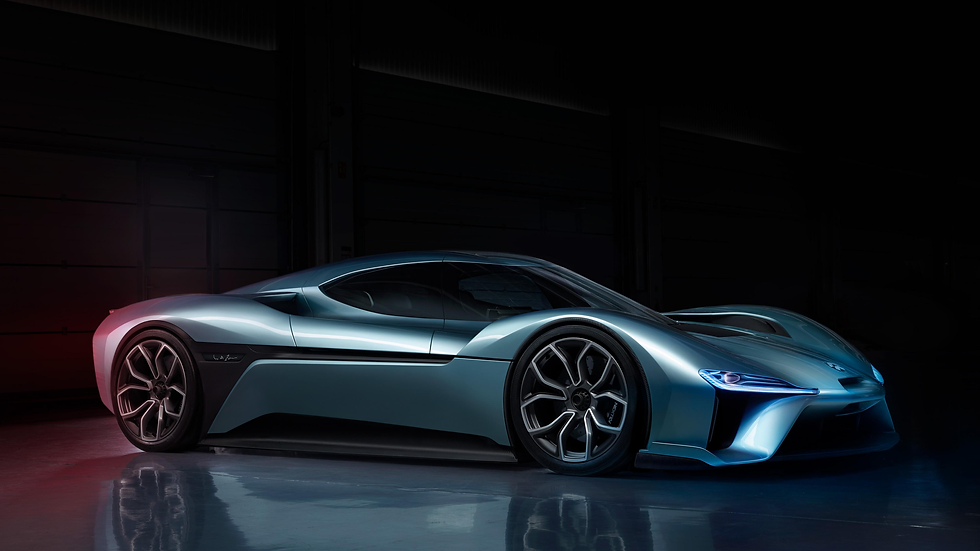
9. Faraday Future FF91: The Faraday Future FF91 is an all-electric luxury SUV that combines style, performance, and cutting-edge technology. With its sleek and futuristic design, the FF91 offers exceptional acceleration and a long electric range. Equipped with advanced autonomous driving features and state-of-the-art connectivity options, the FF91 provides a glimpse into the future of electric mobility.

These 9 mind-blowing futuristic cars are just a taste of what the automotive industry has in store for us. With advancements in electric drivetrains, autonomous technology, and innovative design, the future of transportation is set to be cleaner, safer, and more exciting than ever before. Buckle up and get ready for a thrilling ride into the future.
6. How these cars push the boundaries of design and functionality
How these Cars Push the Boundaries of Design and Functionality
In this section, we will explore how these 10 mind-blowing futuristic cars push the boundaries of design and functionality, redefining the future of transportation. These revolutionary vehicles showcase cutting-edge technology and innovative design, offering a glimpse into what the automotive industry has in store for us.
1. Audi AI:Trail Quattro: The Audi AI:Trail Quattro reimagines the future of adventure travel. Its futuristic design and all-terrain capabilities push the boundaries of what an SUV can do. With its electric drivetrain and advanced autonomous capabilities, the AI:Trail Quattro offers a comfortable and sustainable off-road experience.
2. Mercedes-Benz Vision AVTR: Inspired by the movie "Avatar," the Mercedes-Benz Vision AVTR is a groundbreaking concept car that combines sustainability with connectivity. Its futuristic design seamlessly integrates with the surrounding environment, reflecting its commitment to sustainability. The Vision AVTR also incorporates innovative biometric technology that enhances the driver's connection with the car.
4. BMW Vision iNext: The BMW Vision iNext showcases the brand's vision for the future of mobility. Its clean and minimalist design sets a new standard for interior comfort and advanced technology integration. With autonomous driving capabilities and a focus on sustainability, the iNext redefines the luxury crossover experience.
5. Lexus LF-30 Electrified: The Lexus LF-30 Electrified embodies the brand's vision for sustainable mobility. Its striking design and advanced electrification technology push the boundaries of what a luxury electric vehicle can be. With features such as autonomous driving capabilities and advanced gesture control, the LF-30 Electrified offers a glimpse into the future of luxury transportation.
6. Porsche Taycan: The Porsche Taycan combines performance and sustainability in a sleek and sporty design. With its high-performance electric drivetrain, the Taycan delivers impressive acceleration and precise handling. It pushes the boundaries of what an electric sports car can achieve, redefining the driving experience.
These six cars represent the innovative thinking and design prowess of the automotive industry. They showcase the limitless possibilities of electric drivetrains, autonomous technology, and sustainable mobility. From their stunning designs to their cutting-edge features, these cars push the boundaries of what we thought was possible in transportation. Buckle up and get ready for a thrilling ride into the future.
7. The potential benefits and challenges of owning a futuristic car
The Potential Benefits and Challenges of Owning a Futuristic Car
As we delve into the world of revolutionary futuristic cars, it is important to explore the potential benefits and challenges that come with owning one of these cutting-edge vehicles. While the idea of owning a car straight out of a sci-fi movie may sound enticing, it is crucial to consider both the advantages and obstacles that come with embracing the future of transportation.
1. Advantages of Owning a Futuristic Car:
- Environmental Sustainability: One of the key benefits of futuristic cars is their commitment to sustainability. With a focus on electric drivetrains and reduced carbon emissions, these vehicles contribute to a greener and more environmentally friendly future. By opting for a futuristic car, owners can significantly reduce their carbon footprint and contribute to a cleaner planet.
- Advanced Technology Integration: Futuristic cars are known for their cutting-edge technology features. From advanced autonomous driving capabilities to innovative connectivity options, these vehicles offer a seamless and intelligent driving experience. Owners can enjoy features such as voice-activated controls, personalized settings, and real-time traffic updates, enhancing both convenience and comfort.
- Improved Safety Features: With the integration of advanced sensors, cameras, and artificial intelligence, futuristic cars prioritize safety like never before. These vehicles are designed to detect potential risks and hazards, alerting the driver and autonomously taking corrective actions if necessary. Features such as lane departure warning, collision avoidance systems, and adaptive cruise control enhance overall road safety and reduce the risk of accidents.
2. Challenges of Owning a Futuristic Car:
- High Initial Cost: One of the major challenges of owning a futuristic car is the high initial cost. As these vehicles utilize advanced technology and cutting-edge design, they often come with a hefty price tag. While the cost of futuristic cars is expected to decrease over time as technology becomes more mainstream, currently, potential owners must be prepared to invest a considerable amount of money.
- Limited Infrastructure: Another challenge is the limited infrastructure to support futuristic cars. Electric vehicles, for example, require access to electric charging stations, which may be scarce in some areas. Additionally, autonomous driving capabilities heavily rely on extensive network coverage and reliable GPS systems. Owners must carefully consider the availability of charging stations, network coverage, and compatible infrastructure before investing in a futuristic car.
- Maintenance and Repairs: The advanced technology and unique design of futuristic cars may also pose challenges when it comes to maintenance and repairs. Specialized technicians and parts may be required, potentially leading to higher servicing costs and longer wait times for repairs. Owners must ensure that they have access to qualified technicians and authorized service centers to ensure proper maintenance and upkeep of their vehicles.
While owning a futuristic car undoubtedly comes with its set of benefits and challenges, it is an exciting step towards embracing innovation and shaping the future of transportation. As technology continues to evolve, the advantages are expected to outweigh the obstacles, making futuristic cars a compelling option for those looking to revolutionize their driving experience.
8. The future of transportation: implications for urban planning
The Future of Transportation: Implications for Urban Planning
As we witness the rapid advancement of technology in the automotive industry, it is important to also consider the implications of these futuristic cars on urban planning. With the potential for autonomous driving, electric drivetrains, and innovative transportation systems, the future of transportation holds significant opportunities and challenges for urban planners.
1. Redefined Urban Spaces:
- Reduced Need for Parking: With the development of autonomous vehicles that can drop off passengers and park themselves, the need for extensive parking spaces in urban areas may decrease. This opens up opportunities for repurposing parking lots and garages into green spaces, commercial areas, or housing developments, thereby optimizing land use and enhancing the aesthetics of urban environments.
- Smarter Transportation Hubs: Futuristic cars are expected to be highly connected, enabling seamless integration with various modes of transportation. Urban planners can leverage this connectivity to design smarter transportation hubs that facilitate efficient transfers between different modes, such as buses, trains, and autonomous shuttles. Integrated transportation hubs enhance convenience for commuters and promote sustainable and multi-modal transportation options.
2. Improved Traffic Management:
- Traffic Flow Optimization: Autonomous vehicles have the potential to communicate with each other and with the surrounding infrastructure, enabling real-time traffic flow optimization. Urban planners can leverage this technology to design smarter traffic management systems that reduce congestion, minimize travel times, and improve overall efficiency in urban areas. Algorithms can analyze traffic patterns and adjust signal timings, lane assignments, and speed limits accordingly, creating a smoother and safer driving experience.
- Road Infrastructure Upgrades: The introduction of futuristic cars may require upgrades to existing road infrastructure. For example, autonomous vehicles may rely on specialized lanes or dedicated roadways to ensure safe and efficient operations. Urban planners need to consider these requirements when designing or retrofitting road networks to accommodate the needs of futuristic cars. Additionally, the integration of electric vehicle charging infrastructure should also be taken into account to support the growing adoption of electric drivetrains.
3. Sustainable and Resilient Cities:
- Reduced Carbon Footprint: The widespread adoption of electric vehicles can significantly contribute to reducing carbon emissions and improving air quality in urban areas. Urban planners can proactively incorporate charging infrastructure into their plans to encourage the transition to electric vehicles and promote sustainable transportation options. Additionally, the integration of renewable energy sources, such as solar panels at charging stations, can further enhance the environmental sustainability of futuristic cars.
- Resilient Transportation Systems: With the advancements in technology, urban planners can design transportation systems that are resilient to disruptions caused by natural disasters or emergencies. For example, autonomous vehicles can be programmed to reroute and navigate safely in the event of road closures or accidents. Additionally, the connectivity between vehicles and infrastructure can enable real-time updates and alerts during emergencies, ensuring the safety and well-being of commuters.
As urban planners anticipate the future of transportation, it is crucial to proactively address the implications of these futuristic cars on urban spaces, traffic management, and sustainability. By embracing innovation and leveraging technological advancements, urban planners can shape cities that are efficient, sustainable, and resilient, meeting the evolving needs of future commuters and enhancing the quality of urban life.
9. The role of governments and regulations in facilitating the adoption of futuristic cars
The Role of Governments and Regulations in Facilitating the Adoption of Futuristic Cars
As the automotive industry continues to advance and develop futuristic cars, it is crucial to consider the role of governments and regulations in facilitating their adoption. The introduction of innovative technologies, such as autonomous driving and electric drivetrains, brings both opportunities and challenges that require proactive measures from policymakers and regulatory bodies.
1. Setting Safety Standards:
- Safety is a top priority when it comes to futuristic cars. Governments play a vital role in establishing safety standards and regulations that ensure the safe operation and interaction of these vehicles with other road users. This includes guidelines for autonomous driving systems, cybersecurity measures, and crash testing procedures. By implementing robust safety standards, governments can instill confidence in the public and foster the widespread adoption of futuristic cars.
2. Infrastructure Development:
- The successful integration of futuristic cars into existing transportation systems requires adequate infrastructure support. Governments need to invest in the development of charging stations for electric vehicles, as well as dedicated lanes or specialized roadways for autonomous vehicles. Moreover, they should consider the implementation of smart infrastructure components, such as connected traffic lights and communication systems, to create a seamless and efficient transportation network for futuristic cars.
3. Incentives and Subsidies:
- Governments can incentivize the adoption of futuristic cars by offering subsidies and tax incentives. These can include tax breaks for the purchase of electric vehicles, financial incentives for installing charging stations, and reduced toll fees for autonomous vehicles. By providing financial support, governments can encourage individuals and businesses to invest in futuristic cars, promoting their widespread use and contributing to the development of a sustainable and environmentally friendly transportation system.
4. Research and Development Funding:
- Governments can allocate funding for research and development initiatives in the automotive industry. This can support the development of cutting-edge technologies, such as advanced battery systems for electric vehicles, improved sensors for autonomous driving, and efficient charging infrastructure. By investing in research and development, governments can foster innovation and accelerate the advancement of futuristic cars, ensuring their readiness for widespread adoption.
5. Public Education and Awareness:
- Governments can play a crucial role in educating the public about the benefits and capabilities of futuristic cars. This includes organizing awareness campaigns, providing accurate information about the technology, and addressing any concerns or misconceptions. By fostering public understanding and acceptance, governments can create a supportive environment for the adoption of futuristic cars and mitigate resistance to change.
6. Collaboration and Standardization:
- Governments can facilitate collaboration between different stakeholders in the automotive industry, including automakers, technology companies, and research institutions. By encouraging collaboration, governments can foster the exchange of expertise and resources, leading to the development of standardized technologies and interoperability between different futuristic car models. This collaboration can also ensure that regulations and standards are harmonized across different regions, promoting global adoption and facilitating the integration of futuristic cars into international transportation systems.
As governments navigate the future of transportation, it is crucial for them to actively participate in facilitating the adoption of futuristic cars. By setting safety standards, investing in infrastructure development, offering incentives and subsidies, funding research and development, promoting public education and awareness, and encouraging collaboration and standardization, governments can create an enabling environment for the widespread adoption of these innovative vehicles. This will not only transform the way we travel but also contribute to a greener, safer, and more efficient transportation system for the future.
10. Wrapping up: The promising future of automotive innovation.
Wrapping up: The Promising Future of Automotive Innovation
The automotive industry is on the cusp of a revolutionary transformation, with futuristic cars leading the way. From electric drivetrains to autonomous driving systems, these innovative vehicles promise to reshape the way we travel. As we conclude our exploration of 10 revolutionary futuristic cars, let's reflect on the exciting future of automotive innovation.
1. Electric Vehicles:
- The rise of electric vehicles (EVs) marks a significant shift towards sustainability and reduced carbon emissions. With advancements in battery technology and the growing availability of charging infrastructure, EVs are becoming a viable option for everyday commuting and long-distance travel.
2. Autonomous Driving:
- Autonomous driving technology is poised to revolutionize the way we navigate the roads. From self-parking capabilities to fully autonomous vehicles, the future holds the promise of safer roads, increased efficiency, and improved mobility for all.
3. Connected Cars:
- The integration of vehicles with smart technologies and the Internet of Things (IoT) is enabling seamless connectivity and communication. Connected cars can gather real-time data, provide personalized services, and enhance the overall driving experience.
4. Shared Mobility:
- The advent of ride-sharing platforms and car-sharing services has transformed the concept of vehicle ownership. Shared mobility models promote efficient utilization of vehicles, reduce traffic congestion, and decrease the environmental impact of transportation.
5. Artificial Intelligence (AI) in Cars:
- AI-powered technologies, such as natural language processing and machine vision, are being incorporated into futuristic cars. These AI systems can enhance driver assistance features, personalize user experiences, and improve overall vehicle performance.
6. Sustainability and Eco-friendly Solutions:
- The automotive industry is embracing sustainable practices, focusing on eco-friendly materials, energy-efficient manufacturing processes, and responsible disposal of end-of-life vehicles. As the world becomes increasingly conscious of environmental concerns, automotive innovation is aligning with the goal of creating a greener future.
7. Advanced Safety Features:
- Revolutionary cars are equipped with advanced safety features, including collision avoidance systems, adaptive cruise control, and blind-spot monitoring. These technologies aim to reduce human error and enhance overall road safety.
8. Augmented Reality (AR) Interfaces:
- AR interfaces are being integrated into futuristic cars to provide drivers with real-time information, navigation guidance, and enhanced situational awareness. By overlaying virtual elements onto the real world, AR interfaces can revolutionize the driving experience.
9. Energy Efficiency and Alternative Fuels:
- Automotive innovation is focused on energy-efficient solutions and the exploration of alternative fuels. From hydrogen fuel cells to biofuels, researchers and automakers are striving to develop sustainable alternatives to traditional gasoline-powered vehicles.
10. Design and Aesthetics:
- Futuristic cars are not only technologically advanced but also visually striking. Designers are pushing the boundaries of traditional automotive aesthetics, incorporating futuristic elements and creating vehicles that captivate and inspire.
As we wrap up our exploration of futuristic cars, it is evident that the automotive industry is in an era of unprecedented innovation. The convergence of technology, sustainability, and consumer demands is driving the development of revolutionary vehicles that will shape the future of transportation. Exciting times lie ahead as we embrace a greener, smarter, and more connected automotive future.




Comments